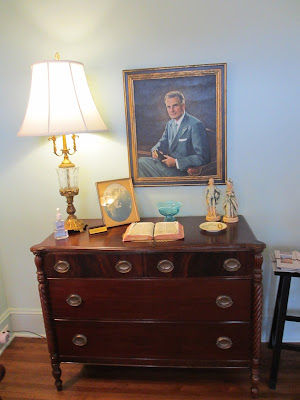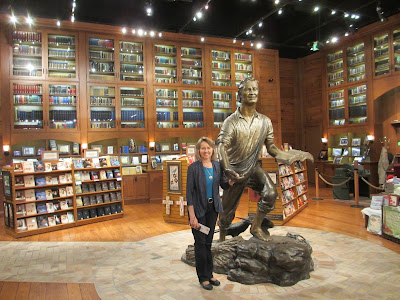As a Mormon growing up in Salt Lake City, Billy Graham had a name and a persona that I was very familiar with, but I knew virtually nothing about him. I saw occasional glimpses of tv shows with him preaching in stadiums full of thousands of people and news clips of him meeting with presidents over the years.
It was recently, reading the book Unbroken by Laura Hillenbrand, that he really caught my attention. Unbroken is a tremendous book about Louis Zamperini, a fantastic college runner, and participant in the 1936 Berlin Olympics, whose plane crashed in the Pacific during WWII. After being adrift in a life raft for months, Louis was eventually captured by the Japanese and held under brutal conditions as a prisoner of war. After his release at the end of the war, Louis married and turned to alcohol to escape the memories of his treatment as a POW. The alcoholism and his hatred for and desire to murder one of his Japanese tormentors doomed his marriage. His wife decided to seek a divorce. In the fall of 1949, Billy Graham, as vice president of Youth for Christ International, set up a circus tent in Los Angeles where he held revival meetings for eight weeks. Louis' wife encouraged him to attend and as Louis was dragging his wife out of the meeting while Graham was ready to pray, Louis recalled a promise he'd made to God while stranded in his raft in the Pacific: "If you will save me, I will serve you forever." Louis turned toward Graham who encouraged him to come forward, saying, "God has spoken to you. You come on." Louis went home that night, threw out his liquor, his cigarettes and his girlie magazines and for the first time since the war was able to sleep without the nightmares of his Japanese captors. Louis dedicated his life to helping troubled youth, rescued his own marriage, and opened a boys camp in the San Gabriel Mountains called Victory Boys Camp. It is one of the most amazing transformations of a life that has ever come to my attention. If Billy Graham did nothing else in his life, besides changing the Life of Louis Zamperini, who has in turn transformed the lives of so many others, it would be a life fulfilled.
Judy and I had a trip planned to the southeastern U.S. We were flying into Charlotte, North Carolina, then driving to Charleston, South Carolina and Savannah, Georgia, before returning to Charlotte to fly home. We had lots of options that excited us in Charleston and Savannah, but nothing that really looked too interesting in Charlotte. The Billy Graham Library was ranked as the no. 1 of 60 attractions in Charlotte, but it didn't have much draw for us. However, I really wanted to do something in Charlotte and recalled the Louis Zamperini story and coaxed Judy into visiting the library.
As a Mormon, I tend to be a little wary of evangelical Christians who are quite outspoken about Mormons being non-Christian. I was heartened in October 2012 when Billy Graham endorsed Mitt Romney for president and removed references to Mormonism as a cult from his website.
The Billy Graham Library is just off the Billy Graham Parkway, and very near the Charlotte airport. As we drove down a long driveway, we eventually had to get past a guard station, where we were questioned briefly and then let in with a free pass.
We first visited the Graham Family Homeplace, which was originally about four miles away, but moved there in 2006 to be part of the library complex.
Graham lived in the home from age 9 until he went away for college.
I engaged in a conversation with one of the hostesses about the Louis Zamperini book I'd read and she mentioned that an author who had been a prisoner of war had visited the library some time back and I assumed (correctly) that it was Zamperini, who is still alive.
We left the Graham home and headed to the library, entering the barn-like structure, which represents the farm Graham grew up on, through a large cross-shaped entrance.
One of the exhibits was a tent representing the "Greater Los Angeles Revival," the event that changed the life of Louis Zamperini.
I think the biggest thing I came away with was an introspective look at my own experience as a missionary, seeing it through different eyes. Recognizing the similarity of many of the same steps I followed with prospective converts and being on the receiving end. We wondered aloud if the Mormons had learned from the evangelicals, or the evangelicals from the Mormons, or if there is a common formula.
Judy next to a statue in the bookstore that follows the tour. The statue represents the parable of the sower.
Finally, we went outside and visited the memorial prayer garden.
What followed was an experience much like a non-Mormon has when visiting a Mormon visitor center. It was kind of fun to be on the receiving end. Instead of being able to wander on our own through the exhibits, we had to be part of a group that went through in lock-step. We found that we did not have enough time to do the full tour and get to the airport on-time for our flight, so we asked if we could get a sped-up version. The supervisor told us to wait until the group in front of us finished, then to sit through the first movie presentation, then skip quickly through the next couple of rooms and make sure we visited the film at the end before leaving. Not surprisingly, in retrospect, we rushed through the historical information on Graham's life, what we were there for, and had the part of the presentation that focused on bringing us to Jesus, what they were there for.
One of the exhibits was a tent representing the "Greater Los Angeles Revival," the event that changed the life of Louis Zamperini.
Unfortunately, as directed, we rushed through this exhibit. Most of the exhibits involved video presentations, staffed by volunteers (presumably), very similar to what you will find in a Mormon visitor center. Then as we entered the climax theater, just the two of us, we were told that if we wanted to pray with someone following the movie, we could be led to a prayer room on the other side. I don't really remember the details of the movie, there were many images of Billy Graham preaching.
But the climax involved the four steps to finding eternal life. The first step is understanding that God loves us and wants us to experience peace and life, eternal life. The second step helps us to understand that we, as sinful people, are separated from God, who is holy. The third step is understanding that there is only one way to bridge the gap between our sinful selves and God, and that bridge is the cross, Jesus Christ who died on the cross and rose from the grave, paying the penalty for our sins.
The fourth step is our necessary response, to receive Christ. Do we want to receive Christ right now? To do so we must admit that we are sinners, be willing to repent, believe that Christ died for us on the cross and rose from the grave, and through prayer invite Christ to come in and control our lives through the Holy Spirit. At the end of the movie we are informed that there are representatives out side the door waiting to take us to a prayer room if we would like to receive Christ as our Lord and Savior. We passed through a door in the shape of a cross and were met by four or five people.
One of them nervously stammered, asking us if we would like to go to the prayer room and accept Christ. I thought of my own two years as a Mormon missionary in England, sometimes teaching people how to pray and then nervously asking them if they would like to pray to learn the truthfulness of our message. They were all very friendly and there was not any undue pressure to conform. I felt somewhat of a kinship, shaped by a similar experience many years ago.
I think the biggest thing I came away with was an introspective look at my own experience as a missionary, seeing it through different eyes. Recognizing the similarity of many of the same steps I followed with prospective converts and being on the receiving end. We wondered aloud if the Mormons had learned from the evangelicals, or the evangelicals from the Mormons, or if there is a common formula.
Judy next to a statue in the bookstore that follows the tour. The statue represents the parable of the sower.
We found copies of Unbroken in the library and mostly confirmed our belief that it was indeed Louis Zamperini who had visited earlier (and confirmed later by the website).
Finally, we went outside and visited the memorial prayer garden.
It was beautiful even among the mostly bare trees. There was found the grave site of Ruth Graham, Billy's wife, and the spot where Billy will be laid to rest when his remarkable life expires.
At the end we were both glad we'd made this visit. We had a little more knowledge about the life of Billy Graham, we had a better feel for the worldview of the evangelicals, and we had a chance for introspection, to see our own worldview in a different light.













Very interesting to compare your missionary experience with the experience you had here. I loved that book and came away with a new respect for Billy Graham and the influence for good he is in the world.
ReplyDeleteI loved this post. I also recently read Unbroken (listened to it actually).
ReplyDeleteOnce as a junior high-aged babysitter for the children down the hill, I watched my first Billy Graham crusade on tv. It was actually quite a spiritual experience.